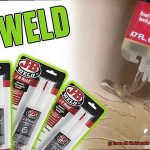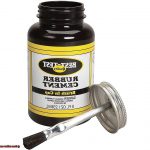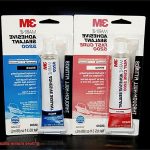Are you on the hunt for that secret sauce to take your fabric crafts to the next level? Look no further, my friend, because we’ve got all the answers right here.
Today, we’re delving deep into the enchanting realm of Mod Podge and its impact on fabric. As self-proclaimed crafting gurus, we’re here to tackle one burning question: does Mod Podge have what it takes to toughen up your beloved fabrics?
So grab those trusty scissors and let’s dive headfirst into the wonderful world of crafting.
What is Mod Podge?
Contents
- 1 What is Mod Podge?
- 2 Does Mod Podge Harden Fabric?
- 3 Factors Affecting the Hardening Effect of Mod Podge on Fabric
- 4 Pros and Cons of Using Mod Podge to Harden Fabric
- 5 Alternative Methods for Hardening Fabric
- 6 Tips for Applying Mod Podge to Fabric
- 7 Testing Mod Podge on a Small Area of the Fabric
- 8 Conclusion
Prepare to immerse yourself in the enchanting world of Mod Podge, a crafting glue that has captured the hearts of artists and DIYers worldwide. In this comprehensive guide, we will delve into the captivating realm of Mod Podge, exploring its nature, myriad applications, and how it can transform your artistic endeavors. So gather your paintbrushes and embark on this exciting journey.
What is Mod Podge?
Mod Podge, a brainchild of Plaid, is a remarkable adhesive that combines the power of glue, sealer, and finish in one ingenious product. Its name, cleverly derived from “modern” and “decoupage,” pays homage to its origins as a revolutionary all-in-one solution for decoupage projects. However, Mod Podge’s versatile properties quickly made it a go-to adhesive for a vast array of crafts.
The Many Faces of Mod Podge:
- Original Mod Podge: A versatile choice for general craft projects.
- Mod Podge Fabric: Specifically formulated to adhere fabric to diverse surfaces.
- Mod Podge Matte: Delivers a flawlessly smooth, non-glossy finish.
- Mod Podge Gloss: Unleashes a lustrous, reflective sheen.
- Mod Podge Outdoor: Engineered to withstand the elements with unwavering resilience.
- Mod Podge Sparkle: Infuses a touch of glamour and sparkle into your creations.
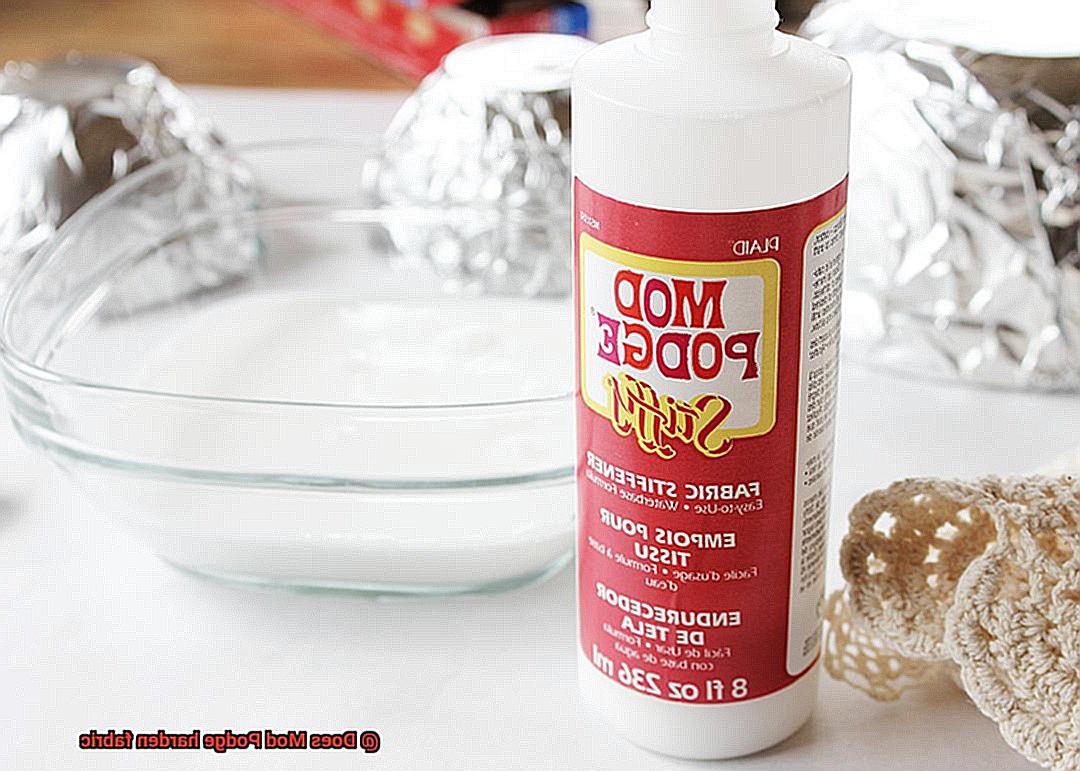
How to Use Mod Podge:
Using Mod Podge is an effortless endeavor. Simply apply it onto your desired surface using a brush or sponge applicator. Any excess can be effortlessly wiped away with a damp cloth before it dries. As a water-based adhesive, cleanup is a breeze with just soap and water while it’s still wet.
The Magic of Mod Podge:
Mod Podge’s true enchantment lies in its remarkable ability to fuse objects together while simultaneously acting as a sealant and finisher. Once applied, Mod Podge dries clear, creating a protective shield against moisture and the sun’s harmful UV rays. It acts as a guardian, preserving and safeguarding your crafts, ensuring they stand the test of time.
Endless Possibilities:
Mod Podge’s compatibility with a vast range of materials unlocks a treasure trove of creative possibilities. From wood to paper, fabric to plastic, and glass to beyond, you can explore a myriad of mediums and embark on thrilling projects. Decoupage, fabric crafts, home decor, and beyond – let your imagination run wild.
Does Mod Podge Harden Fabric?
Mod Podge, the beloved crafting glue, has captured the hearts of crafters far and wide with its remarkable ability to adhere different materials together, including fabric and paper. But does Mod Podge have the power to transform fabric into a stiff masterpiece? As an expert in the world of crafting, I’m here to shed some light on this topic.
When Mod Podge is applied to fabric, it works its magic by creating a strong bond that helps prevent fraying and unraveling. This is fantastic news for any fabric enthusiast looking to keep their creations intact. However, it’s important to note that while Mod Podge can add some stiffness to fabric, it does not completely harden it like other specialized fabric stiffeners do.
The level of stiffness achieved with Mod Podge will depend on the amount applied and how many layers are used. So, if you’re aiming for a super stiff fabric that could stand on its own, you may want to explore other options. But fear not. Mod Podge still holds a special place in your fabric crafting arsenal.
With Mod Podge by your side, you can embark on a world of creative possibilities. You can use it to make fabric-covered boxes that exude elegance and charm. Or why not create whimsical ornaments that will dazzle your holiday decor? You can even fashion unique pieces of jewelry that will make heads turn. The sky’s the limit when it comes to using Mod Podge with fabric.
To achieve the best results when working with Mod Podge and fabric, it’s recommended to use a brush or sponge to ensure an even and thin layer. Allow the fabric to dry completely before handling or manipulating it further. Once dry, you’ll notice that Mod Podge creates a clear and durable finish on the fabric, giving it a touch of rigidity and making it less prone to fraying or stretching.
However, there is one cautionary note: some users have reported that washing Mod Podge-treated fabric can cause the finish to become tacky or peel off. Therefore, if you plan on washing your fabric creation, it’s advisable to either avoid washing it altogether or launder it gently.
Factors Affecting the Hardening Effect of Mod Podge on Fabric
This versatile adhesive has become a beloved staple in the crafting community. Today, we will delve into its impact on fabric and unravel the factors that affect its hardening effect. Whether you’re a seasoned creator or just beginning your crafting adventure, understanding these factors will empower you to achieve flawless finishes in your projects. So, grab a cup of your favorite beverage and let’s embark on this exhilarating exploration.
Type of Mod Podge:
Just like paint comes in different finishes, Mod Podge offers various formulations. If you desire a softer, more flexible finish on fabric, reach for Mod Podge Fabric. However, if you prefer a stiffer outcome, regular Mod Podge or Mod Podge Matte might be your go-to choices.
Fabric Type:
Not all fabrics are created equal when it comes to Mod Podge. Fabrics with loose weaves or porous textures tend to absorb more glue, resulting in a firmer finish. Conversely, fabrics with tight weaves or smooth surfaces may yield a less stiff outcome.
Application Technique:
The way you wield your brush can impact the hardening effect of Mod Podge on fabric. Applying thin, even layers will result in a smoother and softer finish. On the other hand, thick layers or excessive amounts of Mod Podge may lead to a thicker and stiffer layer once dried.
Drying Time:
Patience is key when working with Mod Podge. Allowing it to dry fully according to the manufacturer’s instructions will yield a harder finish. For those desiring a softer result, experimenting with shorter drying times or slightly dampening the fabric after applying Mod Podge can bring forth the desired effect.
Additional Additives:
Mod Podge can be blended with various additives to alter its properties. The addition of water creates a thinner consistency, resulting in a softer finish. Conversely, mixing it with fabric stiffener or similar products can enhance the hardening effect when it dries.
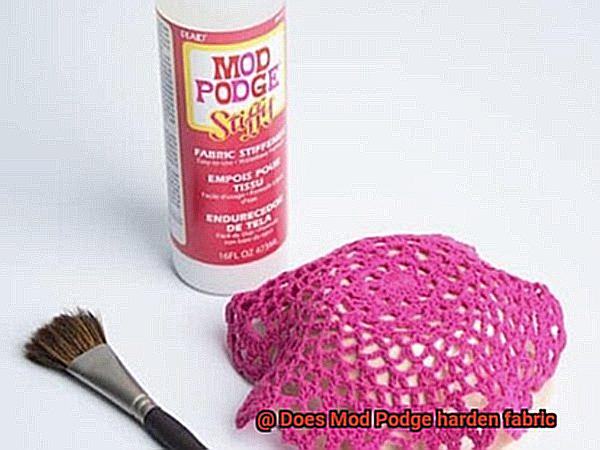
Washing and Care:
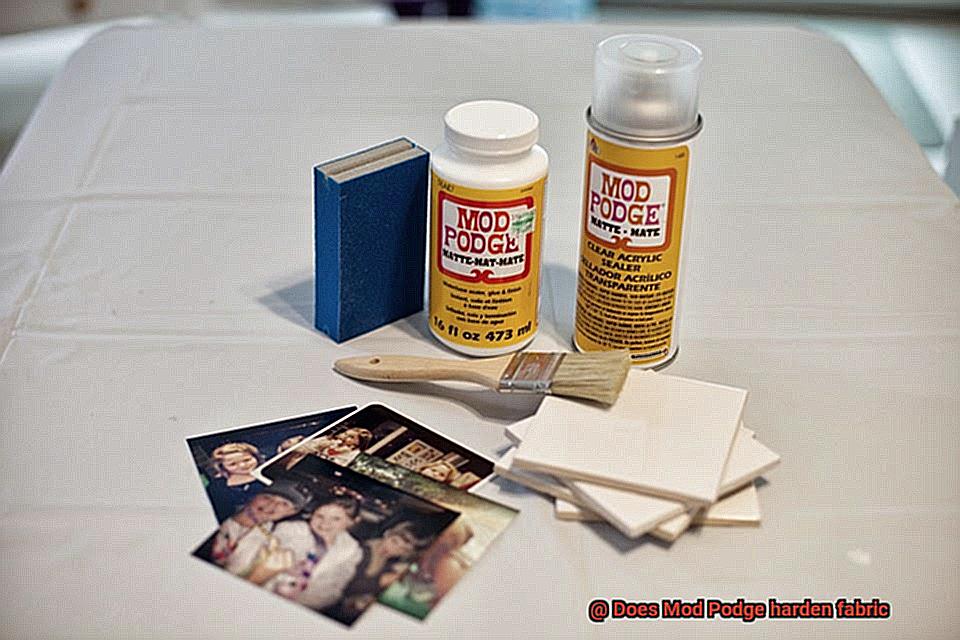
Proper washing and care are crucial to maintaining the hardness or softness of your Mod Podge-treated fabric. Machine washing and high heat drying may cause the Mod Podge to become stiffer over time. To preserve a softer finish, opt for gentle hand washing or use a delicate cycle with cold water. For drying, air drying or tumble drying on low heat is recommended.
Pros and Cons of Using Mod Podge to Harden Fabric
Look no further than Mod Podge, the magical adhesive that can transform your fabric projects into works of art. But before you dive in headfirst, let’s weigh the pros and cons of using Mod Podge to harden fabric.
First up, let’s talk about the pros.
- Easy Application: Mod Podge is a breeze to use, whether you prefer brushing it on or pouring it directly onto the fabric. Its liquid form makes it convenient for crafters of all skill levels. No need to worry about complicated techniques or tools—just apply and let it work its magic.
- Versatility: Mod Podge can be used on various types of fabrics like cotton, canvas, and polyester. This means you can let your creativity run wild and use it for a wide range of fabric-based projects. Whether you’re creating home decor items, accessories, or even clothing embellishments, Mod Podge has got you covered.
- Durability: When it comes to fabric crafts, durability is key. Mod Podge delivers by forming a strong and sturdy finish on the fabric once it dries. This adds stability and shape retention to your projects, ensuring they stand the test of time. Say goodbye to floppy fabric and hello to structured masterpieces.
- Protection: The hardened layer created by Mod Podge acts as a shield, safeguarding your fabric from fraying or fading. It provides an extra layer of protection against regular wear and tear, ensuring that your creations maintain their beauty for years to come.
Now, let’s address the cons.
- Limited Softness: If you’re looking to maintain the softness and flexibility of your fabric, Mod Podge may not be the best option. While it provides stiffness and structure, it can make the fabric less pliable. Keep this in mind when choosing Mod Podge for projects that require movement or drape.
- Visible Texture: Mod Podge leaves behind a noticeable texture when it dries on fabric. If you’re aiming for a smooth and seamless finish, this texture might not be your cup of tea. Consider whether the texture complements your project or if it will detract from the overall aesthetic.
- Potential Color Change: Depending on the type of fabric and Mod Podge formula used, there is a possibility of slight color change when applying Mod Podge. To avoid any surprises, it’s always a good idea to test a small area before committing to the entire fabric. This way, you can ensure that the color remains true to your vision.
- Not Suitable for All Fabrics: Mod Podge may not adhere or harden properly on delicate or sheer fabrics. It’s important to consider the fabric’s characteristics before diving in with Mod Podge. Opt for a different fabric hardener if you’re working with materials that require extra care.
Alternative Methods for Hardening Fabric
While Mod Podge is a popular choice, there are alternative methods that can achieve similar results. In this article, we will explore various techniques and products that can help you achieve a hardened texture and increased rigidity in your fabric projects.
Fabric Stiffeners and Starch:
Looking for an alternative method? Consider using fabric stiffeners or fabric starch. These products are designed to add stiffness and structure to fabric, making it easier to work with. Whether you prefer a spray-on formula or a soak-in option, these alternatives offer versatility based on your project requirements.
Water and White Glue Mixture:
Ready for a DIY approach? Try using a mixture of water and white glue. Simply combine equal parts water and white glue in a bowl, soak the fabric, and shape or dry it as desired. Once dry, the fabric will have a hardened texture that holds its shape well.
Gel Medium:
For a more transparent finish compared to other alternatives, consider using gel medium. Commonly used in mixed media art projects, gel medium can also be used to stiffen fabric. Apply it with a brush or roller, and watch as it dries clear, leaving the fabric rigid and durable.
Heat-Activated Fusible Interfacing:
If retaining the shape of your fabric is essential, heat-activated fusible interfacing is your go-to option. Simply iron it onto the fabric to create a bond that adds structure and rigidity. This method is particularly useful for collars or cuffs.
Resin:
For a truly hardened finish, resin is the way to go. Epoxy resin or polyester resin can be poured or brushed onto the fabric, creating a protective layer that adds stiffness and strength. Although commonly used in jewelry making, it can also be utilized for other fabric-related projects.
Considerations:
While these alternative methods can effectively harden fabric, it’s important to consider potential changes in texture and appearance. Test these techniques on a small sample of fabric before applying them to a larger project. And as always, follow the manufacturer’s instructions for optimal results.
Tips for Applying Mod Podge to Fabric
Mod Podge is a versatile crafting glue that can work wonders on fabric. Whether you’re adding a personal touch to a tote bag or creating a stunning piece of textile art, Mod Podge can help bring your fabric crafts to life. In this detailed guide, we will take you through the step-by-step process of applying Mod Podge to fabric, ensuring a seamless and professional finish. So let’s dive in and get crafty.
Prepare the Fabric:
Before applying Mod Podge to fabric, it’s crucial to prepare your canvas. Start by giving the fabric a thorough wash and dry to remove any dirt, oils, or sizing agents that might hinder the adhesive properties of the Mod Podge. A clean and fresh fabric serves as the perfect foundation for your masterpiece.
Prevent Fraying:
If your fabric has a loose weave or frayed edges, take a moment to prevent any future unraveling. Apply a thin layer of fabric stiffener or fray stopper along the edges before using Mod Podge. This simple yet effective step will keep your fabric intact during and after the application process, ensuring a polished and professional look.
Work in Small Sections:
To achieve an even and flawless result, divide your fabric project into manageable sections when applying Mod Podge. Use a brush or foam applicator to apply an even layer of Mod Podge, starting from the center and working your way towards the edges. Make sure to fully saturate the fabric without going overboard, as excessive application can lead to stiffness.
Smooth it Out:
To avoid unsightly wrinkles and bubbles, gently smooth out the Mod Podge with your fingers or a brayer tool. Take your time and work meticulously to ensure that the fabric is flat and smooth before moving on to the next section. This extra effort will make a world of difference in achieving a professional and flawless finish.
Delicate Fabrics:
If you’re working with delicate or lightweight fabric, consider using a spray adhesive instead of traditional Mod Podge. Spray adhesives are lighter and less likely to weigh down or stiffen delicate fabrics, allowing for a more natural and flexible feel. This option is perfect for preserving the delicate nature of lace, chiffon, or silk fabrics.
Drying and Protecting:
After applying Mod Podge to your fabric, exercise patience and allow it to dry completely before handling or using the item. Drying time may vary depending on factors such as humidity and the thickness of the Mod Podge layer, so be sure to give it ample time to dry. Once dry, consider adding an additional top coat of Mod Podge or a fabric sealer for enhanced durability and protection against wear and tear.
Testing Mod Podge on a Small Area of the Fabric
By conducting this test, you can determine the effect Mod Podge has on your fabric and ensure that your crafting projects turn out just right.
To begin the testing process, gather your materials: Mod Podge (of course), a small brush or sponge for application, and a scrap piece of fabric or an old garment that you don’t mind potentially sacrificing in the name of experimentation. Safety goggles and lab coats are optional, but hey, who says crafting can’t be fashionable?
Now that you have everything you need, it’s time to get down to business. Choose a small and inconspicuous area on your fabric where you can apply the Mod Podge. This way, any potential mishaps will be easily hidden or minimized. We wouldn’t want our crafting mishaps to steal the spotlight, would we?
Before slathering on the Mod Podge, make sure your fabric surface is clean and free from any dirt or debris. Give it a gentle wash with mild soap and water if needed, but remember to let it dry completely before proceeding. Wet fabric and glue don’t mix well unless you’re going for a soggy masterpiece.
Now comes the fun part – applying the Mod Podge. Start by using your brush or sponge to spread a thin layer of Mod Podge onto the chosen area of fabric. Be careful not to go overboard with the glue; too much can result in a stiff and crunchy texture once dried. We want our fabric to be soft and pliable, not resemble a potato chip.
After applying the Mod Podge, sit back and let it work its magic. Allow it to dry completely according to the manufacturer’s instructions. This may take some time, so be patient. It’s like waiting for a cake to bake – the anticipation is half the fun.
Once the Mod Podge has dried, it’s time for the big reveal. Carefully examine the fabric area you tested. Take note of any changes in texture, stiffness, or color. Did the Mod Podge harden the fabric, leaving it with a stiff and crunchy feel? Or did it seamlessly blend in, enhancing the fabric’s beauty? Every crafting adventure is a unique one, so don’t be afraid to embrace the unexpected.
If the Mod Podge has hardened your fabric and you’re not thrilled with the result, fear not. There are potential solutions. You can try washing the fabric in warm water with mild soap to soften the glue. However, test this method on a small area first to ensure it doesn’t cause further damage. We wouldn’t want our fabric creations to become a science experiment gone wrong.
Conclusion
Mod Podge, the beloved crafting adhesive, has long been hailed for its ability to transform ordinary fabrics into durable masterpieces.
But does Mod Podge really harden fabric? The answer is a resounding yes.
When applied to fabric, Mod Podge dries clear and creates a protective barrier that stiffens and strengthens the fibers. It’s like giving your fabric an armor of creativity.
No longer will you have to worry about frayed edges or floppy finishes. With Mod Podge, your fabric projects will be infused with a newfound rigidity that ensures longevity and durability.
So, go ahead, unleash your inner artist and let Mod Podge work its magic on your fabrics. From clothing embellishments to home decor accents, this versatile adhesive will leave you in awe of its transformative powers.



